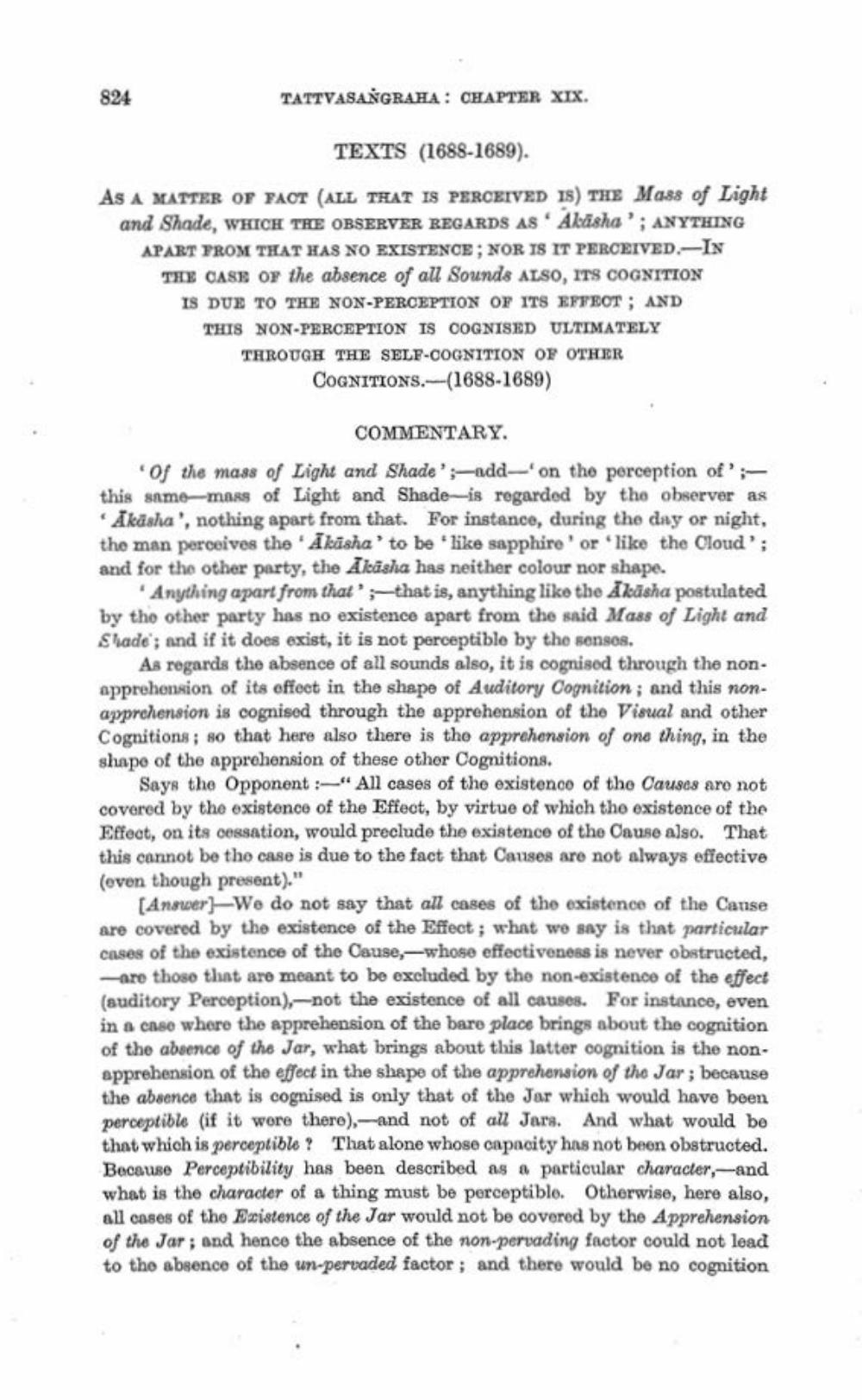________________
824
TATTVASANGRAHA : CHAPTER XIX.
TEXTS (1688-1689).
AS A MATTER OF FAOT (ALL THAT IS PERCEIVED IS) THE Mass of Light and Shade, WHICH THE OBSERVER REGARDS AS Akasha'; ANYTHING APART FROM THAT HAS NO EXISTENCE; NOR IS IT PERCEIVED-IN THE CASE OF the absence of all Sounds ALSO, ITS COGNITION IS DUE TO THE NON-PERCEPTION OF ITS EFFECT ; AND THIS NON-PERCEPTION IS COGNISED ULTIMATELY THROUGH THE SELF-COGNITION OF OTHER
COGNITIONS.-(1688-1689)
COMMENTARY
of the mass of Light and Shade' ;-add-on the perception of' ;this same-manS of Light and Shade-is regarded by the observer as * Äkäsha', nothing apart from that. For instance, during the day or night, the man perceives the . Akasha' to be like sapphire' or 'like the Cloud': and for the other party, the Alcāsha has neither colour nor shape.
"Anything apart from that, that is, anything like the Ārāsha postulated by the other party has no existence apart from the said Mass of Light and Shade'; and if it does exist, it is not perceptible by the senses.
As regards the absence of all sounds also, it is cognised through the nonapprehension of its effect in the shape of Auditory Cognition; and this nonapprehension is cognised through the apprehension of the Visual and other Cognitions ; so that here also there is the apprehension of one thing, in the shape of the apprehension of these other Cognitions.
Says the Opponent :-"* All cases of the existence of the Causes are not covered by the existence of the Effect, by virtue of which the existence of the Effect, on its cessation, would preclude the existence of the Cause also. That this cannot be the case is due to the fact that Causes are not always effective (even though present)."
(Answer]-We do not say that all cases of the existence of the Cause are covered by the existence of the Effect; what we say is that particular cases of the existence of the Cause,whose effectiveness is never obstructed,
are those that are meant to be excluded by the non-existence of the effect (auditory Perception),- not the existence of all causes. For instance, even in a cnso where the apprehension of the bare place brings about the cognition of the absence of the Jar, what brings about this latter cognition is the nonapprehension of the effect in the shape of the apprehension of the Jar; because the absence that is cognised is only that of the Jar which would have been perceptible (if it were there), and not of all Jars. And what would be that which is perceptible? That alone whose capacity has not been obstructed. Because Perceptibility has been described as a particular character, and what is the character of a thing must be perceptible. Otherwise, here also, all cases of the Existence of the Jar would not be covered by the Apprehension of the Jar; and hence the absence of the non-pervading factor could not lead to the absence of the un-pervaded factor; and there would be no cognition




